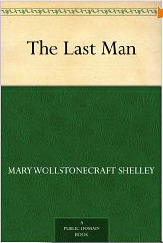Sibyl's
A woman that prophisied
During classical antiquity, according to various accounts, priestesses and priests in the sacred grove interpreted the rustling of the oak (or beech) leaves to determine the correct actions to be taken. According to a new interpretation, the oracular sound originated from bronze objects hanging from oak branches and sounded with the wind blowing, similar to a wind chime.
Or which way the wind blows
There were many sibyls in different locations throughout the ancient world. Because of the importance of the Cumaean Sibyl in the legends of early Rome as codified in Virgil's Aenied VI, and because of her proximity to Rome, the Cumaean Sibyl became the most famous among the Romans.
Centuries ago, concurrent with the 50th Olympiad, not long before the expulsion of Rome's kings, an old woman "who was not a native of the country"[2] arrived incognita in Rome. She offered nine books of prophecies to King Tarquin; and as the king declined to purchase them, owing to the exorbitant price she demanded, she burned three and offered the remaining six to Tarquin at the same stiff price, which he again refused, whereupon she burned three more and repeated her offer. Tarquin then relented and purchased the last three at the full original price, whereupon she "disappeared from among men".[2]
The books were thereafter kept in the Temple of Juipiter on the Capitoline Hill, Rome, to be consulted only in emergencies. The temple burned down in the 80s BC, and the books with it, necessitating a re-collection of Sibylline prophecies from all parts of the empire (Tacitus 6.12). These were carefully sorted and those determined to be legitimate were saved in the rebuilt temple. The Emperor Augustus had them moved to the Temple of Apollo on the Palatine Hill, where they remained for most of the remaining Imperial Period.
The Cumaean Sibyl is featured in the works of various Roman authors, including Virgil (the Eclogues, the Aeneid), Ovid (the Metamophoses) and Petronius (the Satyricon).
Stories recounted in Virgil's Aeneid
The Cumaean Sibyl prophesied by “singing the fates” and writing on oak leaves. These would be arranged inside the entrance of her cave, but if the wind blew and scattered them, she would not help to reassemble the leaves and recreate the original prophecy.
The Sibyl was a guide to the underworld (Hades), whose entrance lay at the nearby crater of Avernus. Aeneas employed her services before his descent to the lower world to visit his dead father Anchises, but she warned him that it was no light undertaking:
Trojan, Anchises' son, the descent of Avernus is easy.
All night long, all day, the doors of Hades stand open.
But to retrace the path, to come up to the sweet air of heaven,
That is labour indeed.
— Aeneid 6.126-129.
The Sibyl acts as a bridge between the worlds of the living and the dead (cf. concept of liminality). She shows Aeneas the way to Avernus and teaches him what he needs to know about the dangers of their journey.
The epigraph to T. S. Eliot's poem The Waste Land (1922) is a quote from the Satyricon of Petronius (48.8) wherein Trimalchio states, "Nam Sibyllam quidem Cumīs ego ipse oculīs meīs vīdī in ampullā pendere, et cum illī puerī dīcerent: Σίβυλλα τί θέλεις; respondēbat illa: ἀποθανεῖν θέλω." ("For I indeed once saw with my own eyes the Sibyl at Cumae hanging in her jar, and when the boys asked her, 'Sibyl, what do you want?' she answered 'I want to die'.")
Gerard Manley Hopkins' so-called "caudal" (i.e., lengthened) sonnet "Spelt from Sybil's Leaves" offers a somber prophecy and meditation on life and death.
The title of Sylvia Plath's semi-autobiographical novel The Bell Jar has been said to be a reference to the ampulla in which the Sibyl lived.
Robert Graves fashioned a poetic prophesy by the Sibyl to bind the story together in his work of historical fiction, I, Claudius (1934).
Geoffrey Hill's poem "After Cumae" in For the Unfallen (1958) also refers to the Sibyl's "mouthy cave".
Mary Shelley claimed in the introduction to her novel The Last Man that in 1818 she discovered, in the Sibyl's cave near Naples, a collection of prophetic writings painted on leaves by the Cumaean Sibyl. She claimed she edited these writings into the current first-person narrative of a man living at the end of the 21st century, which in-story proves to be the end of humanity


